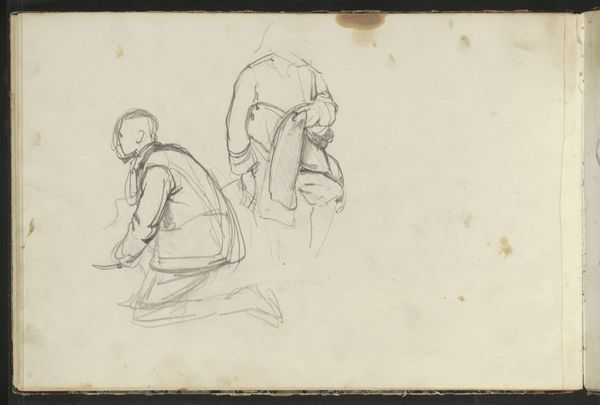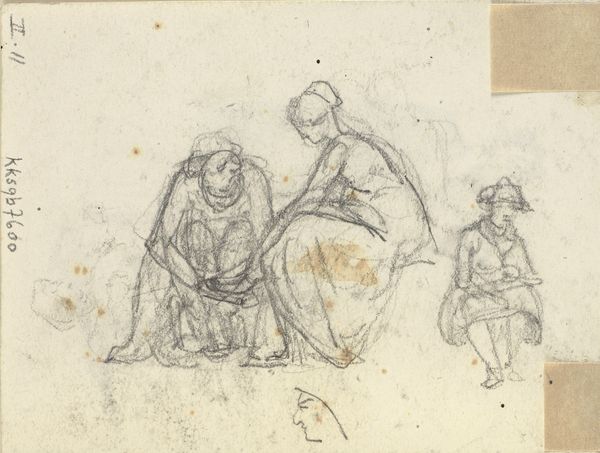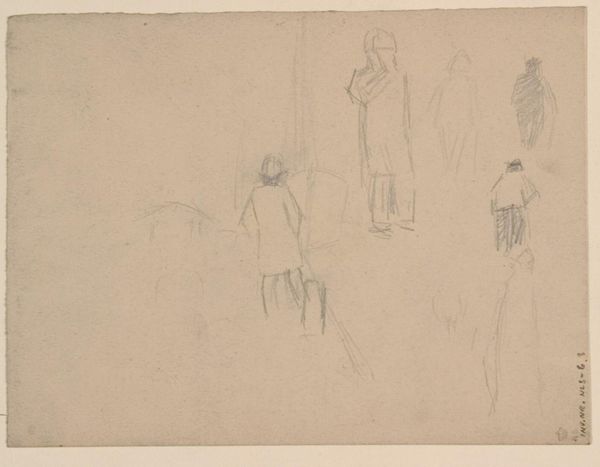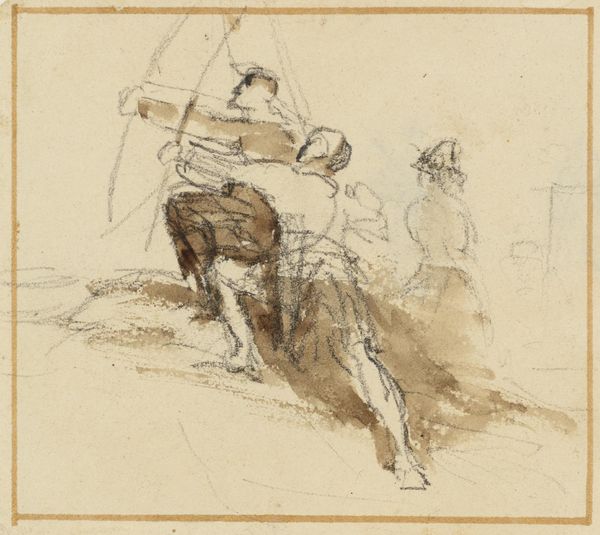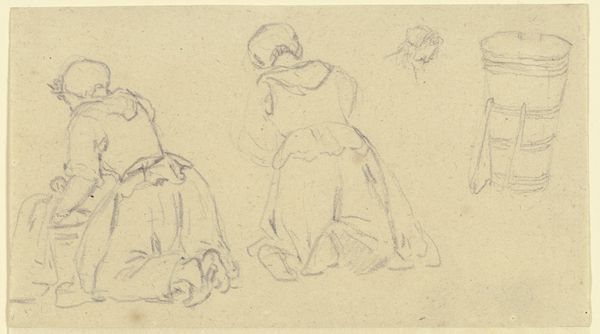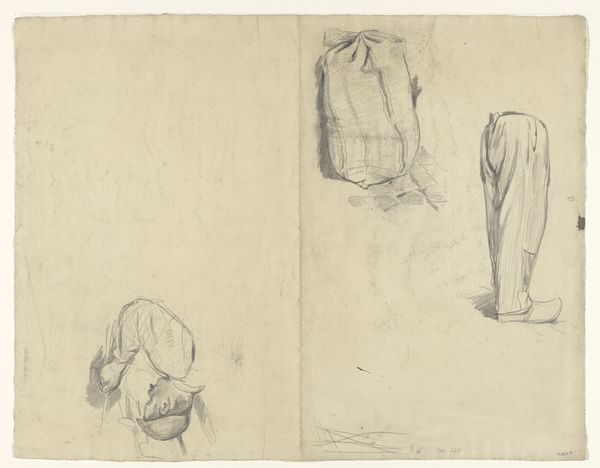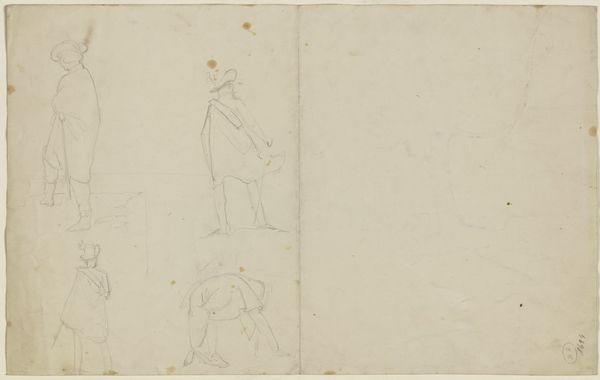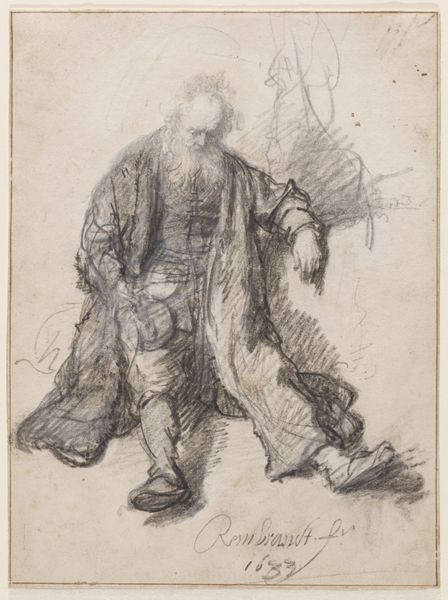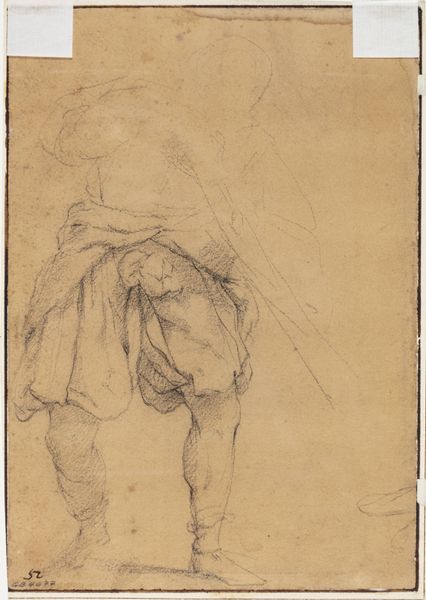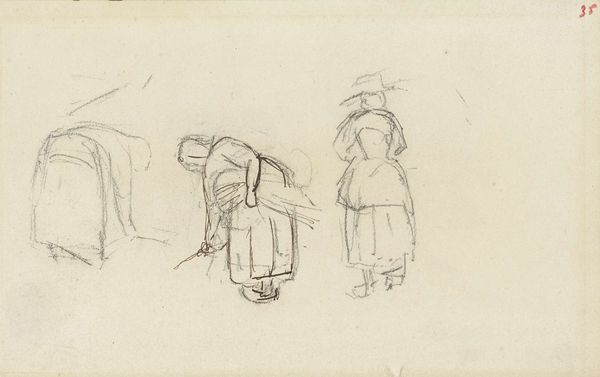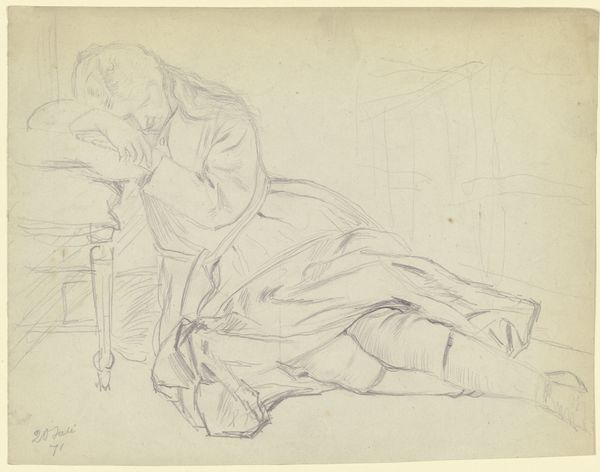
drawing, paper
#
portrait
#
drawing
#
figuration
#
paper
#
realism
Copyright: Public Domain
Curator: Let's talk about this captivating drawing, "Zwei sitzende russische Bauern," housed right here at the Städel Museum, attributed to Johann Nepomuk Rauch. What’s your immediate reaction? Editor: There's a ghostly quality. The quick strokes and soft shading give it this sense of figures fading into the background, burdened by a silent, weighty history. The cloaks or garments obscure details, which just amplifies the mystique. Curator: Rauch certainly captures a feeling of peasant life through minimal details. What symbols or ideas about Russian peasantry resonate with you here? Editor: Well, the anonymity is striking. The artist seems to have deliberately obscured their faces and distinct features. It speaks to the erasure of individual stories in favor of representing a collective, perhaps even stereotypical, identity. It makes me consider archetypes like “the peasant,” versus portraits of specific individuals, complete with name and social status. Curator: That’s insightful. Rauch created studies of figures like these and was not aiming at idealized images. Instead, it may reflect on societal class issues of the time. It is simply a study in realism done with pencil and paper. There's nothing sentimental here; it's a direct look. Editor: Even without sentimentalizing, there's an inherent pathos in their posture. They are seated, inactive... their stillness suggests resilience born from centuries of quiet endurance and, sadly, maybe oppression too. It evokes feelings of humility, but not necessarily voluntary. The hood that covers the subject’s head to the left could be seen as something that both protects and restricts. Curator: It’s as though the material and style amplify the effect. This raw, unpolished style feels particularly apt for the subject matter. It lacks pretension, mirroring the supposed simplicity of the subjects. Editor: I think that's a great point. The very 'unfinished' feel is like a statement in itself: life unfinished, stories untold, history incomplete. It prompts a kind of questioning instead of definitive answers. What do *you* get when you stand and consider it? Curator: It reminds me how we look for ourselves in art. This image triggers reflections about what the past and present teach us. It is interesting what an old drawing can reveal.
Comments
No comments
Be the first to comment and join the conversation on the ultimate creative platform.
